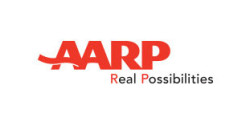Optimism–March 2, 2016
Some of our favorite quotes about optimism:
- “Optimism is the faith that leads to achievement. Nothing can be done without hope and confidence.” Helen Keller
- “Perpetual optimism is a force multiplier.” Colin Powell
- “Pessimism leads to weakness, optimism to power.” William James
- “Optimism means better than reality; pessimism means worse than reality. I’m a realist.” Margaret Atwood
Nonprofits are extremely optimistic endeavors. They need to be optimistic as they pursue missions such as curing diseases, helping tens of thousands of disabled veterans, guiding consumers and seniors to make safe choices, offering free medical care to very sick children, and sharing religious beliefs. Nonprofits also need optimism because they rely primarily on fundraising from individual donors. Nonprofits need to believe they can make things better than current reality, and they need to demonstrate over and over that they do make things better.
Perhaps their inherent optimistic nature is making it so hard for many nonprofits to understand recent communications from one of their most important partners, the United States Postal Service. The USPS has appeared to be extremely pessimistic about its future for several years. Many trace it to the March 2010 release of the report “Ensuring a Viable Postal Service for America: An Action Plan for the Future.”
While it has an optimistic-sounding title, much of the content is about how inevitably bad things are going to get and how little postal management can do about it. It concludes that while forecasting the future is inherently difficult, only about half of the projected gap can be addressed by postal management. The rest would require changes in the law. That mindset seems to have governed postal communications, and actions, since 2010.
Much of the predicted decline was developed by consulting firms that used data from other posts around the world. The report predicted annual losses of $10 to $15 billion in the current time frame, even with all available “actions within management control.”
Of course, the USPS is doing much better than that. Perhaps the U.S. is different enough from the rest of the world, with the largest direct mail and work-sharing industries by far. And we have the world’s most advanced partnerships between the post and other carriers to deliver packages the last mile.
The usual interpretation is that the USPS must emphasize the negative so it can convince Congress to pass a new law and give it relief. It leaves one to wonder how much better the Postal Service could do if it exuded optimism and used most of its energies to pursue new customers and new opportunities with existing customers, as well as controlling its labor costs.








Leave a Reply